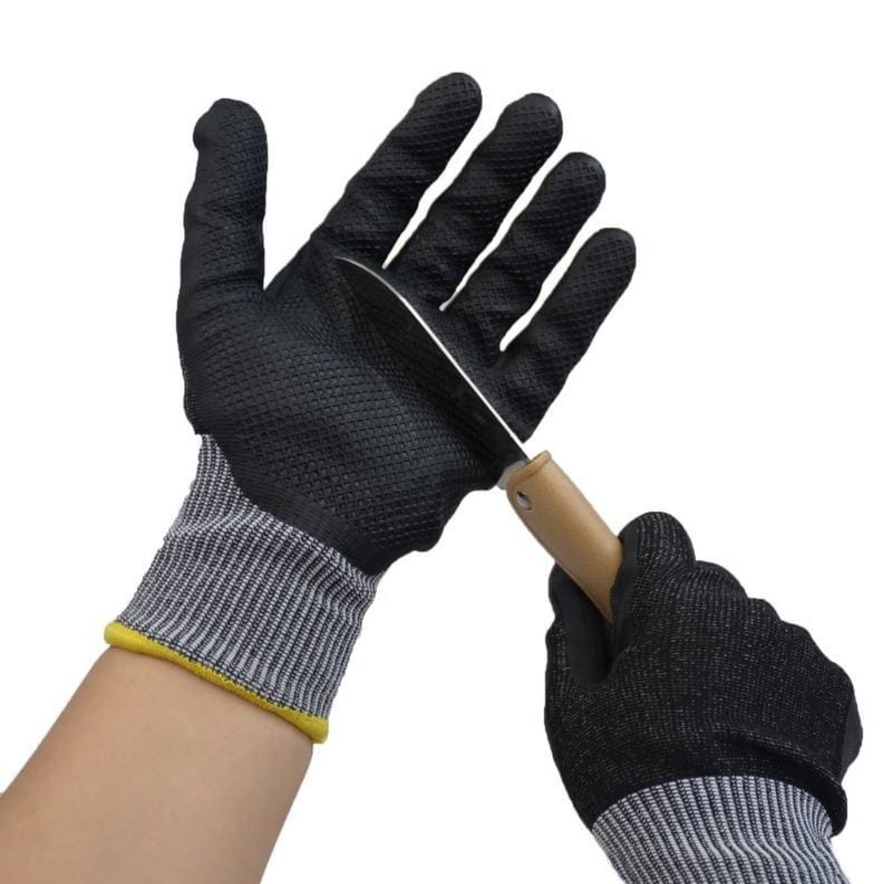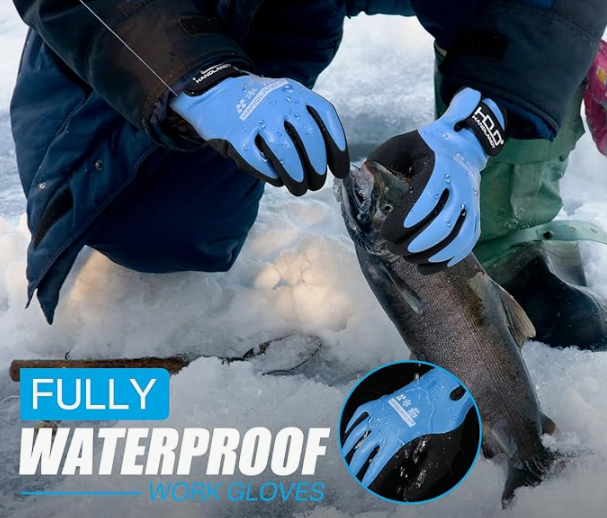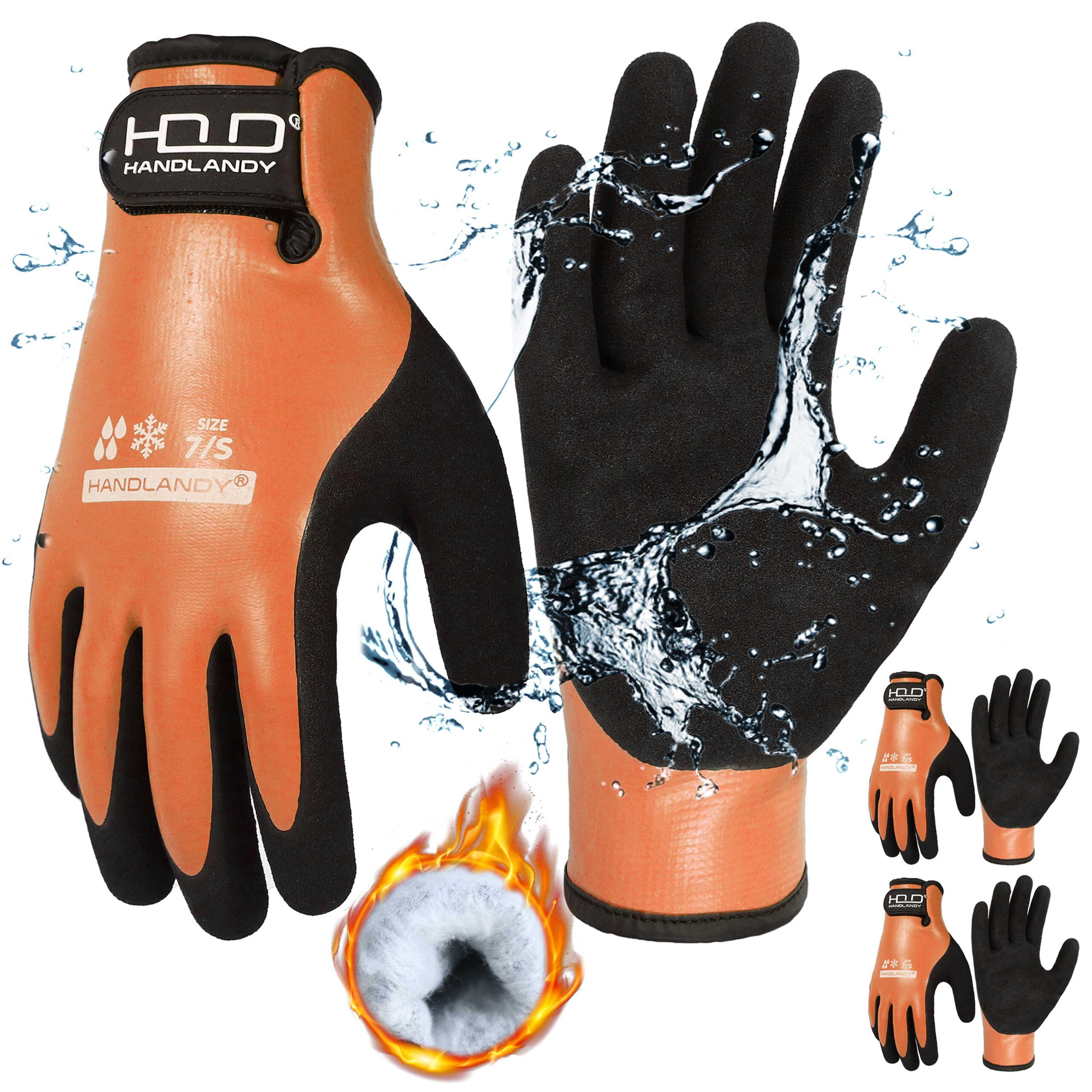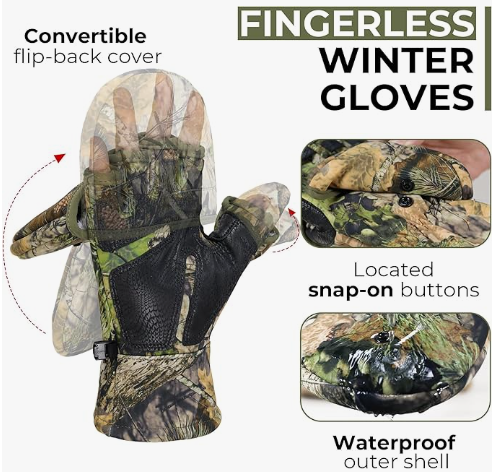A Level 9 glove refers to the highest cut resistance rating under the ANSI/ISEA 105-2016 standard. These gloves provide the most protection against cuts and are used in high-risk industries like metal fabrication, glass manufacturing, and construction.
Understanding ANSI Cut Resistance Levels
The ANSI/ISEA 105-2016 standard measures a glove’s ability to resist cuts. The levels range from A1 to A9, with A9 offering the highest protection.
| Cut Level | Cut Resistance (grams of force applied) |
|---|---|
| A1 | 200 – 499 |
| A2 | 500 – 999 |
| A3 | 1,000 – 1,499 |
| A4 | 1,500 – 2,199 |
| A5 | 2,200 – 2,999 |
| A6 | 3,000 – 3,999 |
| A7 | 4,000 – 4,999 |
| A8 | 5,000 – 5,999 |
| A9 | 6,000+ |
Level 9 gloves are designed for extreme cut hazards and can resist cuts from sharp materials like steel, glass, and blades.
Who Needs Level 9 Gloves?
Not everyone needs this high level of protection. However, these gloves are essential for jobs involving sharp materials, such as:
- Metal Fabrication – Handling sheet metal and sharp edges.
- Glass Manufacturing – Cutting and moving glass sheets.
- Automotive Industry – Working with sharp metal parts.
- Construction – Cutting wires, tiles, and other sharp objects.
- Recycling and Waste Management – Handling glass and scrap metal.
Materials Used in Level 9 Gloves
To provide extreme cut protection, Level 9 gloves are made from high-performance materials, such as:
- High-performance polyethylene (HPPE) – Lightweight but strong.
- Kevlar® – Heat-resistant and durable.
- Steel or Glass Fiber Reinforcement – Adds extra cut resistance.
- Composite Yarns – A blend of materials for durability and flexibility.
Most Level 9 gloves also include coatings (nitrile, polyurethane, or latex) for better grip and durability.
Pros and Cons of Level 9 Gloves
| Pros | Cons |
|---|---|
| Maximum cut protection | Less flexible than lower-cut gloves |
| Durable and long-lasting | Can be more expensive |
| Great for extreme cut hazards | Not necessary for all tasks |
If you don’t need the highest cut resistance, consider gloves with lower ratings that offer more flexibility.
Choosing the Right Glove for Your Needs
Not all jobs require Level 9 gloves. If your work involves handling extremely sharp materials, they are a must. However, if you need dexterity, a lower-cut level might be a better choice.
Key Factors to Consider:
- Hazard Level – Are you handling sharp materials daily?
- Dexterity – Do you need flexibility for detailed tasks?
- Grip – Does your job involve handling slippery materials?
- Comfort – Do you need breathable materials for all-day use?
Final Thoughts
Level 9 gloves provide the highest level of cut resistance, making them essential for high-risk industries. If your work involves handling sharp materials, these gloves can reduce the risk of serious injuries.
Choosing the right gloves depends on your specific needs. If you’re unsure, consult with a glove manufacturer to find the best option for your job.








